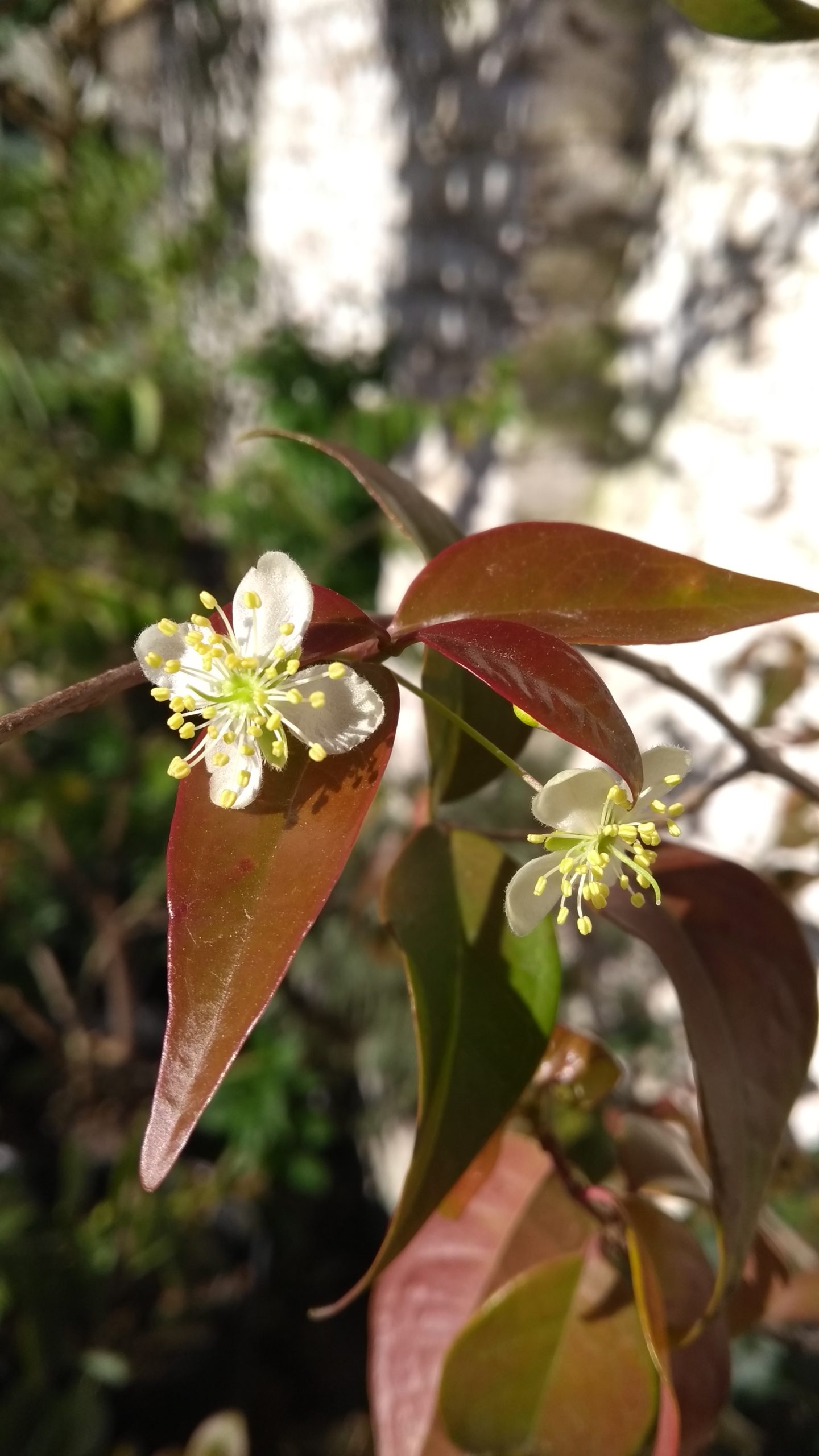I feel that It’s the “end” of a long journey that began when I had a space to garden and became interested in indigenous fruits for its ease of cultivation (not ants, no pests, no diseases, do not die with our frosts, drought resistance, adapted to the regional ecosystem and promote it, give pleasant smell beautiful flowers, its fruits are very nutritious with high concentrations of vitamins and antioxidants, etc..). These unique features make them a part in the food sovereignty of a nation.
This specimen planted in the garden had been purchased as “red pitanga” but was mature in black (color that has the best reputation in the species).
So you could see the fruit on the tree today, November 21:
The pitanga or ñangapirí has been a great mystery to me for over a year or more: I’ve read all about it, I’ve gotten many little ones and cultivated some plants from seeds, and I have received several comments in English, Spanish and Portuguese, some negative (more negative) because the fruit to be obtained from seed is very variable.
This particular went through the colors: yellow, magenta, red, dark red and black.
(November 16, red)
When came off today (3 days after arriving to the black color) my face broke into a big smile, at last I would unveil the mystery: would the pitanga fruit worth?
I took some photos and took the small fruit into the house. There are varieties 3 or 4 times larger than this, but to me that does not matter a lot: while it is tasty, size does not matter at all.
I cut with a sharp knife and it “bled” immediately casting a surprisingly fluid and attractive red, you could almost smell the sugar.
It took my mouth eagerly, not wanting to lose the opportunity to try something that seemed so weak yet voluptuous for its colors, shiny black skin, spilled red juice on the plate.
It was like a quick shock of sweetness and some acidity, reminded me of other “berries”, maybe raspberries or blackberries, but rather to some jam (something very sweet and already cooked) of such fruit. Anyway it does not tastes like anything I had tried before.
As a result of an only small piece, the experience passed quickly: I can say it has its own personality, I was not displeased at all (only the sepals of what was the flower are bitter, but we can avoid eating them), my fingers were stained with a violet color (easily dyed).
The taste did not remember any other fruit in the family Myrtaceae that had tried before: no red arazá (strawberry guava) reminded me, neither the Guaviyú (size and similar color), or the feijoa or guava. That is neither good nor bad, but it shows that the fruit has its own personality. Also, some people says it tastes like tangerine, but I dont think that, at least with our fruit.
In all, what struck me most was that its unique touch of bitterness there is something between such sweetness that makes it special: should try many more pitanga fruits to really understand the taste and conclude that it is a spectacular fruit, with an only one so small it is impossible to give a final conclusion; only 2 fruits left in other tree that will be tested in a few days to look if they are similar to this, then I have to wait several months to test a ñangapirí again.
The seed (germinates easily):









Looks great Marcos, bet you can’t wait till there’s more than one…regards…Norm.
Thanks Norm! yes, I think these could be very good ones! just 2 left on another tree to try